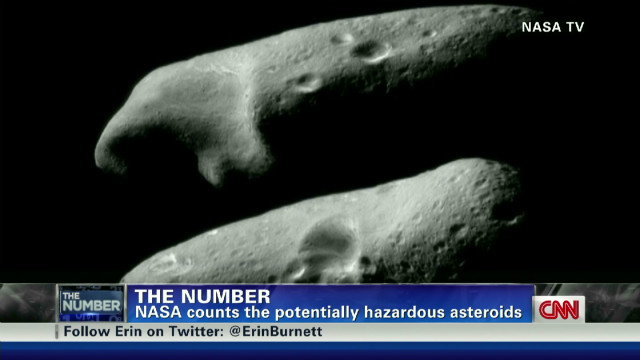Story highlights
- It's going to be the closest shave in known history, NASA expert says
- Asteroid 2012 DA14 is traveling at 17,400 mph
- Star gazers will likely turn out for a peek in Eastern Europe, Asia and Australia
- Asteroids may be mined in space for their natural resources some day
Look out for Asteroid 2012 DA14.
It is heading toward Earth at 17,450 miles per hour, according to NASA, and the tug of our planet's gravitational field will cause it to accelerate when it gets here.
But it's not going to strike us, when it passes by on February 15. NASA is adamant about this.
"Its orbit is very well-known," said Dr. Don Yeomans, NASA specialist for near-Earth objects. "We know exactly where it's going to go, and it cannot hit the Earth."
But it will give the Blue Planet the closest shave by any object its size in known history, Yeomans said. Gravity will cause it to fly a curved path, tugging it closer to Earth's surface than most GPS or television satellites.
While the asteroid is moving at a good clip, space rockets have to accelerate to an even higher speed to escape Earth's gravity and make it into space. Though 2012 DA14 will be flying more slowly, its trajectory will keep it from falling to Earth.
Getting a look at 2012 DA14
Star gazers in Eastern Europe, Asia or Australia might be able to see it with binoculars or consumer telescopes. It will not be visible to the naked eye, because it's small, "about half the size of a football field," Yeomans said.
There are millions of asteroids in our solar system, and they come in all dimensions -- from the size of a beach ball to a large mountain, NASA said.
Researchers are looking forward to getting such a close look at an asteroid, as it flies from south to north past Earth, coming as close as 17,200 miles to our planet's surface. NASA will ping it with a signal from a satellite dish for a few days to get a better idea of its makeup.
Astronomers think there are about half a million asteroids the size this one near Earth, NASA said, but less than one percent have been detected.
Twenty years ago, no one would likely have discovered 2012 DA14, Yeomans said. Scientists spotted it nearly a year ago from an observatory in the south of Spain. Today, specialists track asteroids' paths 100 years into future.
They do so less to assess any possible threat of impact with Earth and more to explore what opportunities they offer. "These objects are important for science. They're important for our future resources," Yeomans said.
Asteroids are potential gold mines
Asteroids can be chock full of metals and other materials, which could be mined for use on earth or on space stations. NASA has discussed the possibility of capturing near-Earth asteroids and placing them into Earth's orbit to study them and extract their resources.
At least two start-up companies, Planetary Resources and Deep Space Industries, plan to mine asteroids and sell the acquired bounty on Earth and in space.
Being able to exploit asteroids' resources would allow humans to fly farther out into the solar system, build stations a long way from Earth and supply them with materials gathered out in space.
Some asteroids, for example, are made of ice, NASA said, which could be used as drinking water for a distant space platform.
What if one like this did hit us?
An asteroid this size passes this close to Earth only every 40 years and collides with it only once every 1,200 years.
If NASA turns out to be wrong about this one not hitting the planet -- and they won't be -- then Asteroid 2012 DA14 would not destroy the world in any case, Yeomans said.
An asteroid made of metal that was about the same size collided with Earth 50,000 years ago, creating the mile wide "Meteor Crater" in Arizona and obliterating everything for 50 miles around, he said.
2012 DA14 is likely made of stone, which would do much less damage.
In 1908 a similar type asteroid entered the atmosphere and exploded over Tunguska, Russia, leveling trees over an area of 820 square miles -- about two thirds the size of Rhode Island.
Not Earth shattering, but you still wouldn't want to live nearby.









